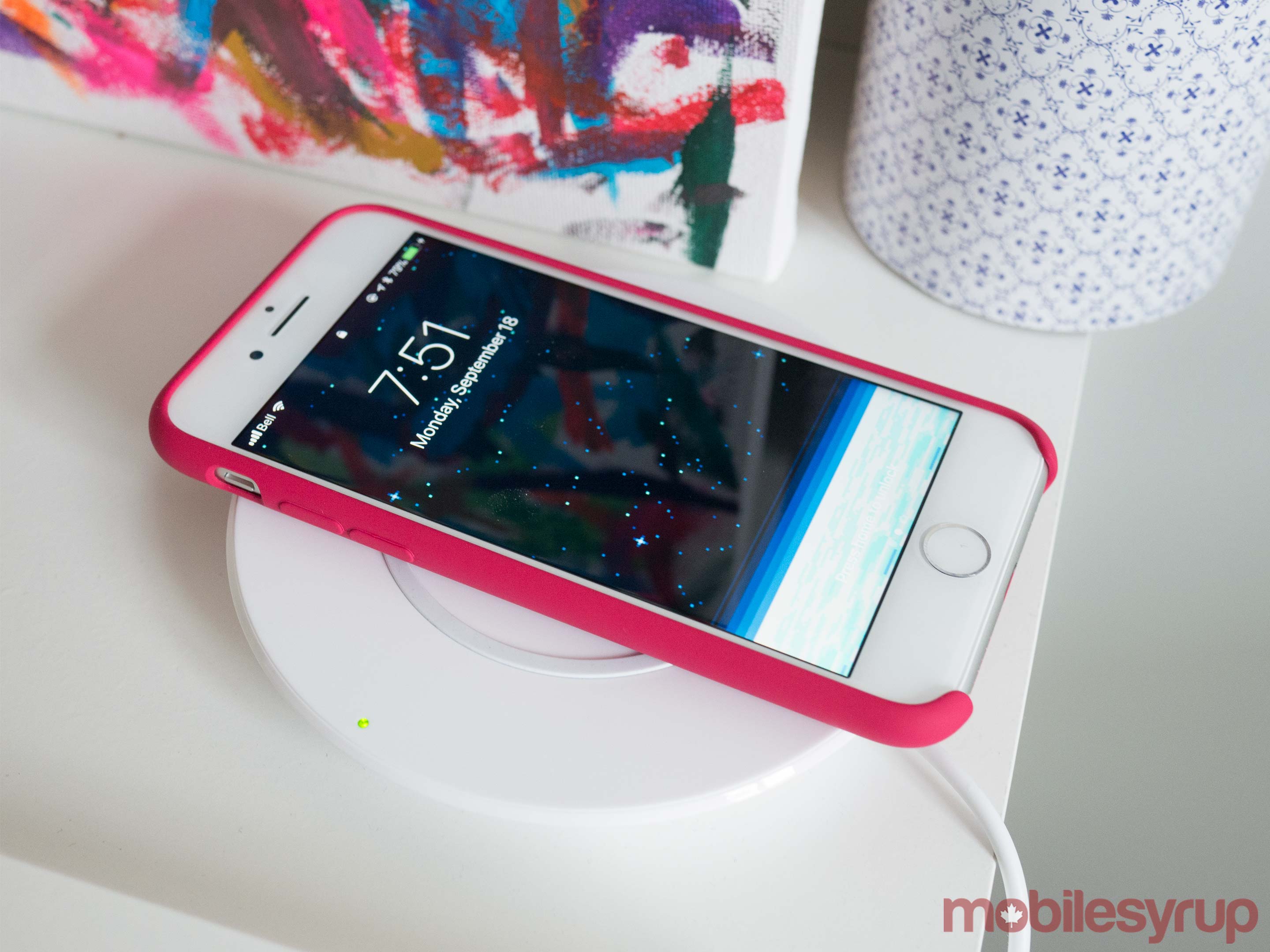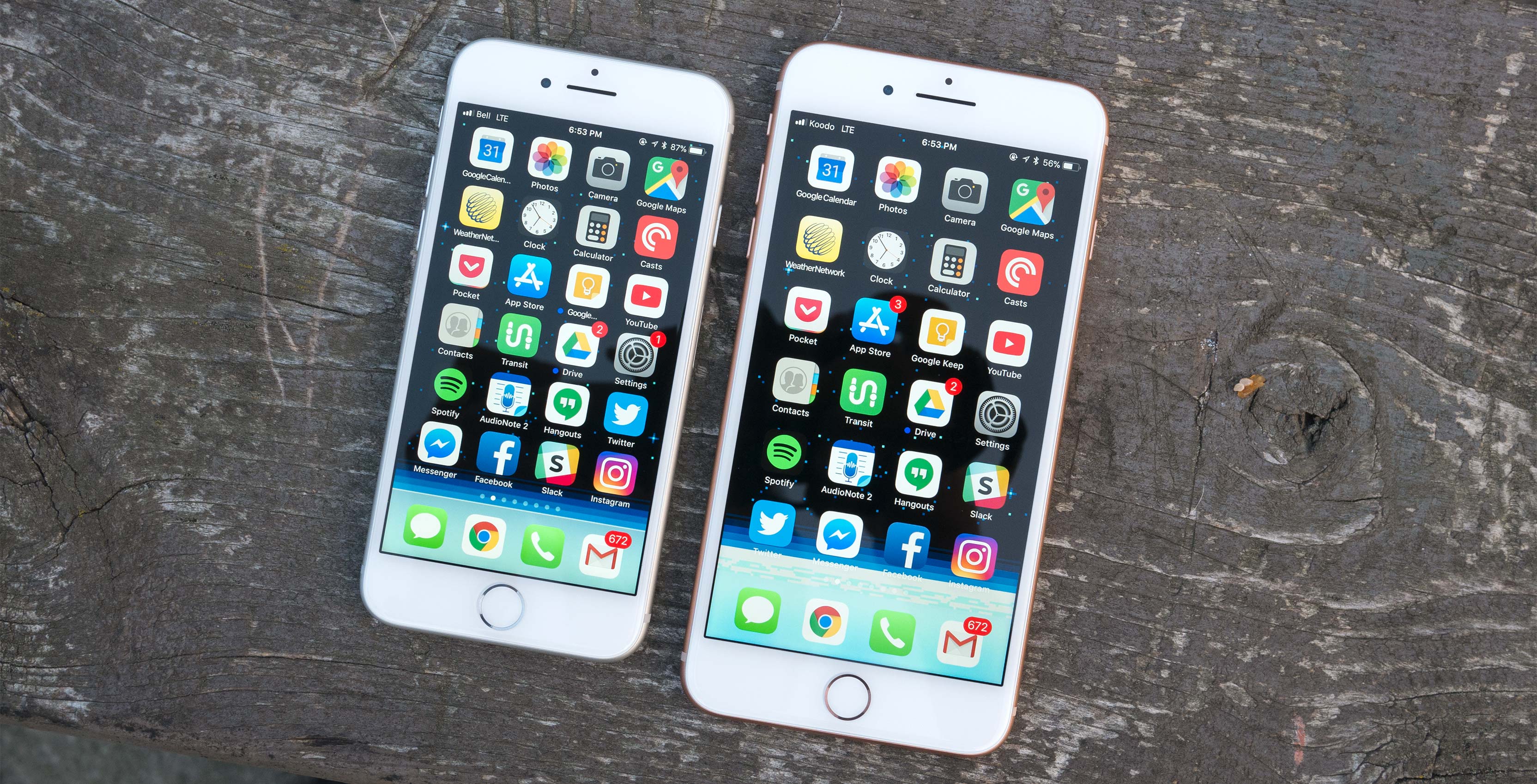
The Pros
- New camera features are impressive
- Qi wireless charging is great
- A11 processor is a substantial upgrade over the A10
The Cons
- iPhone X is looming on the horizon
- Not a big upgrade over the iPhone 7
- Design is showing its age
Apple’s iPhone 8 and iPhone 8 Plus are difficult smartphones to review.
Both devices offer users excellent camera performance, a sleek-looking design and optimization for augmented reality (AR) content thanks to Apple’s powerful new A11 Fusion processor.
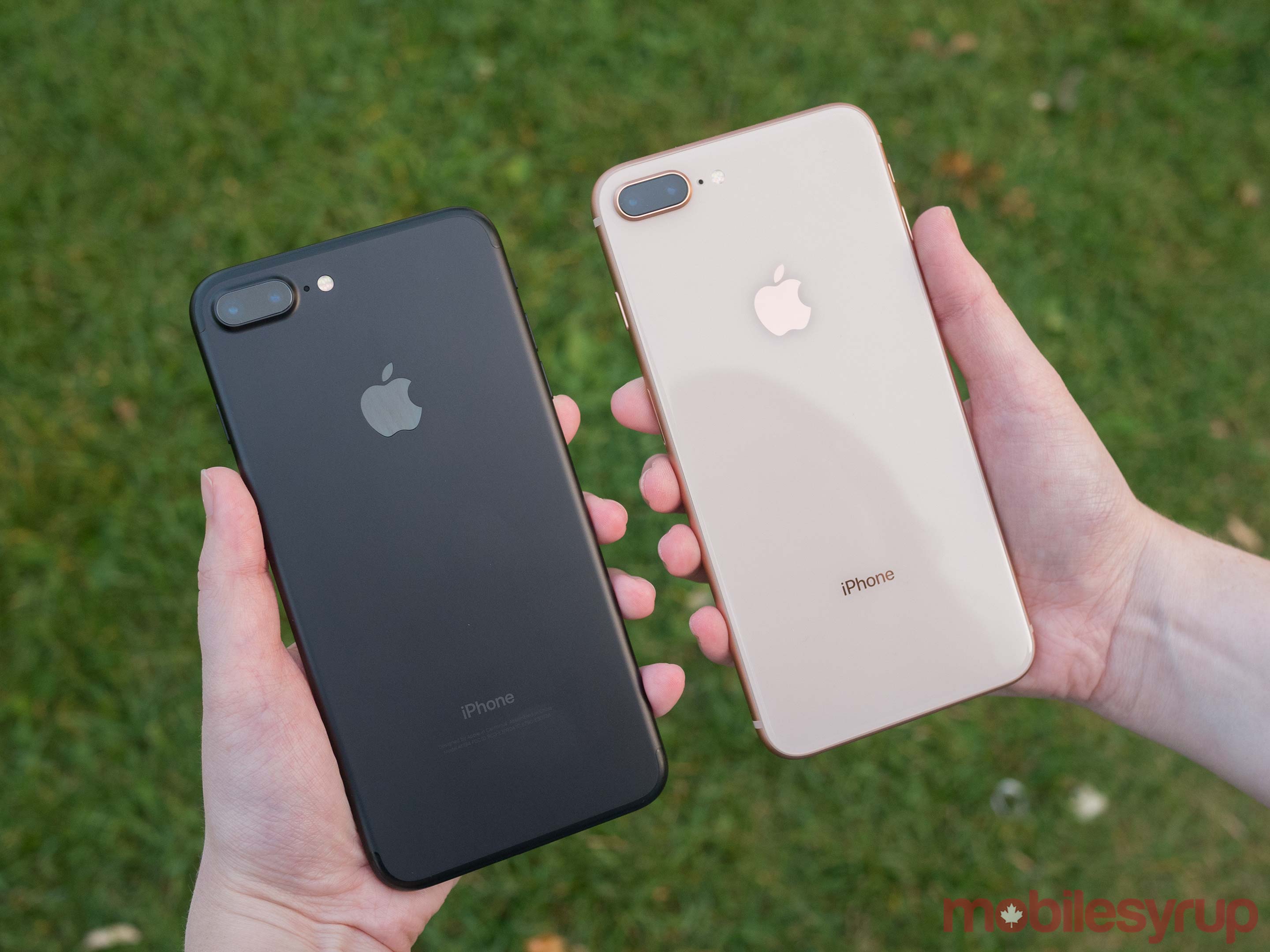 However, regardless of how you look at it, the iPhone 8 is not a significant step over the iPhone 7, similar to how the 7 was not a big jump over the 6s. Furthermore, with the iPhone X’s launch looming on the horizon, it’s difficult to ignore the fact that the iPhone 8 will soon feel like an outdated device in many respects, though it does share some features with the upcoming pricier iPhone X.
However, regardless of how you look at it, the iPhone 8 is not a significant step over the iPhone 7, similar to how the 7 was not a big jump over the 6s. Furthermore, with the iPhone X’s launch looming on the horizon, it’s difficult to ignore the fact that the iPhone 8 will soon feel like an outdated device in many respects, though it does share some features with the upcoming pricier iPhone X.
“Despite its similarities to the iPhone 7, it’s difficult to find a significant fault with the iPhone 8.”
You could also make the argument that this is a good thing. Given that the iPhone X fundamentally changes the way users interact with Apple’s smartphone by revamping iOS to operate without a home button, as well as ditching Touch ID for the tech giant’s new Face ID facial recognition platform, the iPhone 8 amounts to a more familiar alternative.
For those worried about price and the fact that the iPhone X will likely be difficult to find until at least early 2018, the iPhone 8 is a viable, though decidedly less exciting option for those that still intend to purchase a new iPhone this year.
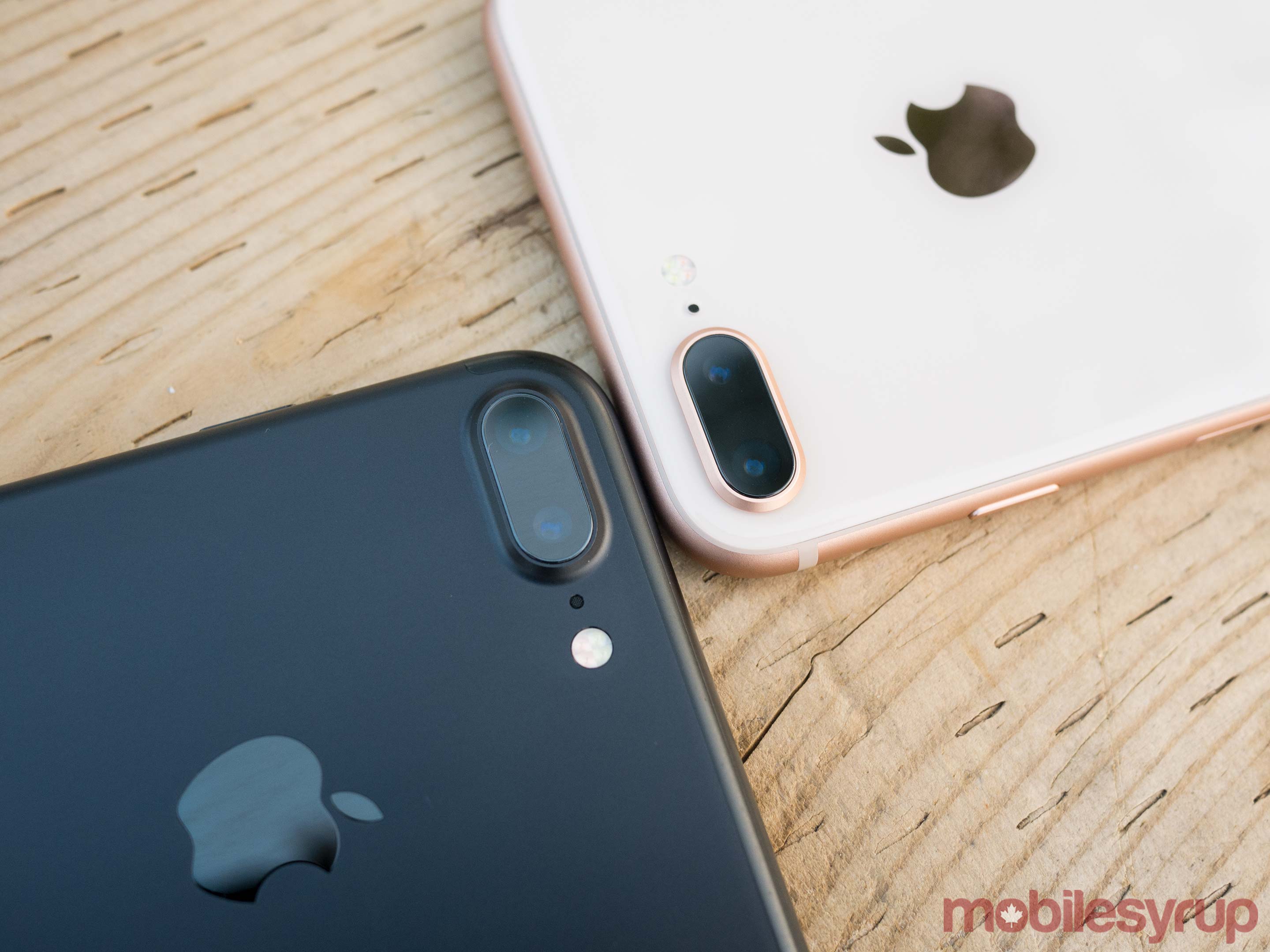
All things considered, it’s difficult to find a significant fault with the iPhone 8. The main issue most people will likely have with the smartphone is its similarity to the iPhone 7.
iPhone 8
iPhone 8 Plus
Apple iPhone 7 Plus
iPhone X
Display
4.7-inch, Retina HD, IPS LCD display, 1334 x 750 pixels
5.5-inch, Retina HD, IPS LCD display, 1920 x 1080 pixels
5.5 inch LED-backlit IPS LCD
5.8-inch, OLED True Tone display, 2436 x 1125 pixels
Processor
A11 Bionic chip with 64-bit architecture
A11 Bionic chip with 64-bit architecture
Apple A10 Fusion
A11 Bionic chip
RAM
2GB
3GB
3GB RAM
3GB of RAM
Storage
64GB, 256GB (non expandable)
64GB, 256GB (non expandable)
32/128/256 GB
64GB, 256GB
Dimensions (in.)
138.4mm x 67.3mm x 7.3mm
158.4mm x 78.1mm x 7.5mm
158.2mm x 77.9mm x 7.3mm
143.6 x 70.9 x 7.7mm
Weight
148g
202g
188g
174g
Rear Facing Camera
12-megapixel (OIS, f/1.8)
12-megapixel (f/1.8) + 12-megapixel (f/2.8, OIS, AF) dual-LED flash
Dual 12-megapixel, (28mm, f/1.8, OIS & 56mm, f/2.8), phase detection autofocus, 2x optical zoom, quad-LED (dual tone) flash
12-megapixel (f/1.8, OIS) + 12-megapixel (f/2.4, OIS), quad-LED 'True Tone' flash
Front Facing Camera
7-megapixel (f/2.2)
7-megapixel (f/2.2)
7-megapixel, f/2.2, 32mm, 1080p@30fps, 720p@240fps, face detection, HDR, panorama
7-megapixel (f/2.2)
OS
iOS 11
iOS 11
iOS 10.0.1
iOS 11
Battery
2,150mAh (non-removable)
2,700mAh (non removable)
Non-removable Li-Ion 2,900 mAh battery (11.1 Wh)
2,716mAh
Network Connectivity
GSM / HSPA / LTE / Band 66
GSM / HSPA / LTE / Band 66
GSM / CDMA / HSPA / EVDO / LTE
GSM / HSPA / LTE / Band 66
Sensors
Touch ID fingerprint sensor, Barometer, Three-axis gyro, Accelerometer, Proximity sensor
Touch ID fingerprint sensor, Barometer, Three-axis gyro, Accelerometer, Proximity sensor
Fingerprint (front-mounted), accelerometer, gyro, proximity, compass, barometer
TrueDepth Camera Sensor, Face ID, accelerometer, gyro, proximity, compass, barometer
SIM Type
Nano SIM
Nano SIM
Nano SIM
Nano SIM
Launch Date
September 22, 2017
September 22, 2017
September 16, 2016
November 3, 2017
Misc
Colours: silver, space grey, and gold| IP76 dust/water resistant, made of aerospace-grade aluminum, 3D touch; stereo speakers; Qi wireless charging
Colour: silver, space grey, and gold | 3D touch, stereo speakers, IP67 water/dust resistant portrait lighting, cameras calibrated for AR, Qi wireless charging
Wi-Fi 802.11 a/b/g/n/ac, dual-band, hotspot, Bluetooth 4.2, IP67 certified - dust and water resistant.
Colours: space grey and silver| Glass front and back, IP67 water/dust resistant, calibrated for AR, Qi wireless charging
Display
iPhone 8
4.7-inch, Retina HD, IPS LCD display, 1334 x 750 pixels
iPhone 8 Plus
5.5-inch, Retina HD, IPS LCD display, 1920 x 1080 pixels
Apple iPhone 7 Plus
5.5 inch LED-backlit IPS LCD
iPhone X
5.8-inch, OLED True Tone display, 2436 x 1125 pixels
Processor
iPhone 8
A11 Bionic chip with 64-bit architecture
iPhone 8 Plus
A11 Bionic chip with 64-bit architecture
Apple iPhone 7 Plus
Apple A10 Fusion
iPhone X
A11 Bionic chip
RAM
iPhone 8
2GB
iPhone 8 Plus
3GB
Apple iPhone 7 Plus
3GB RAM
iPhone X
3GB of RAM
Storage
iPhone 8
64GB, 256GB (non expandable)
iPhone 8 Plus
64GB, 256GB (non expandable)
Apple iPhone 7 Plus
32/128/256 GB
iPhone X
64GB, 256GB
Dimensions (in.)
iPhone 8
138.4mm x 67.3mm x 7.3mm
iPhone 8 Plus
158.4mm x 78.1mm x 7.5mm
Apple iPhone 7 Plus
158.2mm x 77.9mm x 7.3mm
iPhone X
143.6 x 70.9 x 7.7mm
Weight
iPhone 8
148g
iPhone 8 Plus
202g
Apple iPhone 7 Plus
188g
iPhone X
174g
Rear Facing Camera
iPhone 8
12-megapixel (OIS, f/1.8)
iPhone 8 Plus
12-megapixel (f/1.8) + 12-megapixel (f/2.8, OIS, AF) dual-LED flash
Apple iPhone 7 Plus
Dual 12-megapixel, (28mm, f/1.8, OIS & 56mm, f/2.8), phase detection autofocus, 2x optical zoom, quad-LED (dual tone) flash
iPhone X
12-megapixel (f/1.8, OIS) + 12-megapixel (f/2.4, OIS), quad-LED 'True Tone' flash
Front Facing Camera
iPhone 8
7-megapixel (f/2.2)
iPhone 8 Plus
7-megapixel (f/2.2)
Apple iPhone 7 Plus
7-megapixel, f/2.2, 32mm, 1080p@30fps, 720p@240fps, face detection, HDR, panorama
iPhone X
7-megapixel (f/2.2)
OS
iPhone 8
iOS 11
iPhone 8 Plus
iOS 11
Apple iPhone 7 Plus
iOS 10.0.1
iPhone X
iOS 11
Battery
iPhone 8
2,150mAh (non-removable)
iPhone 8 Plus
2,700mAh (non removable)
Apple iPhone 7 Plus
Non-removable Li-Ion 2,900 mAh battery (11.1 Wh)
iPhone X
2,716mAh
Network Connectivity
iPhone 8
GSM / HSPA / LTE / Band 66
iPhone 8 Plus
GSM / HSPA / LTE / Band 66
Apple iPhone 7 Plus
GSM / CDMA / HSPA / EVDO / LTE
iPhone X
GSM / HSPA / LTE / Band 66
Sensors
iPhone 8
Touch ID fingerprint sensor, Barometer, Three-axis gyro, Accelerometer, Proximity sensor
iPhone 8 Plus
Touch ID fingerprint sensor, Barometer, Three-axis gyro, Accelerometer, Proximity sensor
Apple iPhone 7 Plus
Fingerprint (front-mounted), accelerometer, gyro, proximity, compass, barometer
iPhone X
TrueDepth Camera Sensor, Face ID, accelerometer, gyro, proximity, compass, barometer
SIM Type
iPhone 8
Nano SIM
iPhone 8 Plus
Nano SIM
Apple iPhone 7 Plus
Nano SIM
iPhone X
Nano SIM
Launch Date
iPhone 8
September 22, 2017
iPhone 8 Plus
September 22, 2017
Apple iPhone 7 Plus
September 16, 2016
iPhone X
November 3, 2017
Misc
iPhone 8
Colours: silver, space grey, and gold| IP76 dust/water resistant, made of aerospace-grade aluminum, 3D touch; stereo speakers; Qi wireless charging
iPhone 8 Plus
Colour: silver, space grey, and gold | 3D touch, stereo speakers, IP67 water/dust resistant portrait lighting, cameras calibrated for AR, Qi wireless charging
Apple iPhone 7 Plus
Wi-Fi 802.11 a/b/g/n/ac, dual-band, hotspot, Bluetooth 4.2, IP67 certified - dust and water resistant.
iPhone X
Colours: space grey and silver| Glass front and back, IP67 water/dust resistant, calibrated for AR, Qi wireless charging
Qi Charging is finally here
The iPhone 8 and 8 Plus stick to the same tried and true aesthetic as their predecessors, complete with the now familiar design that has remained a constant since the release of the iPhone 6 back in 2014. Despite the iPhone 8’s sleek new glass back — which is a fingerprint and smudge magnet like other glass back phones — from a purely aesthetic perspective, both Samsung’s S8 and Note 8 are more visually impressive.
First, let’s run through what’s actually new in the iPhone 8 and 8 Plus. Wireless charging powered by the Qi standard has finally hit Apple’s iPhone thanks to the device’s shiny glass back. While Android enthusiasts will decry that this feature has been present in Google-powered devices, particularly those from Samsung for a number of years, this likely won’t matter to Apple faithful. It’s worth noting that Qi wireless charging the iPhone 8 is a slow process. with the phone only charging about 15 percent every 30 minutes. For those looking for a faster charge, the iPhone 8 also supports fast charging.
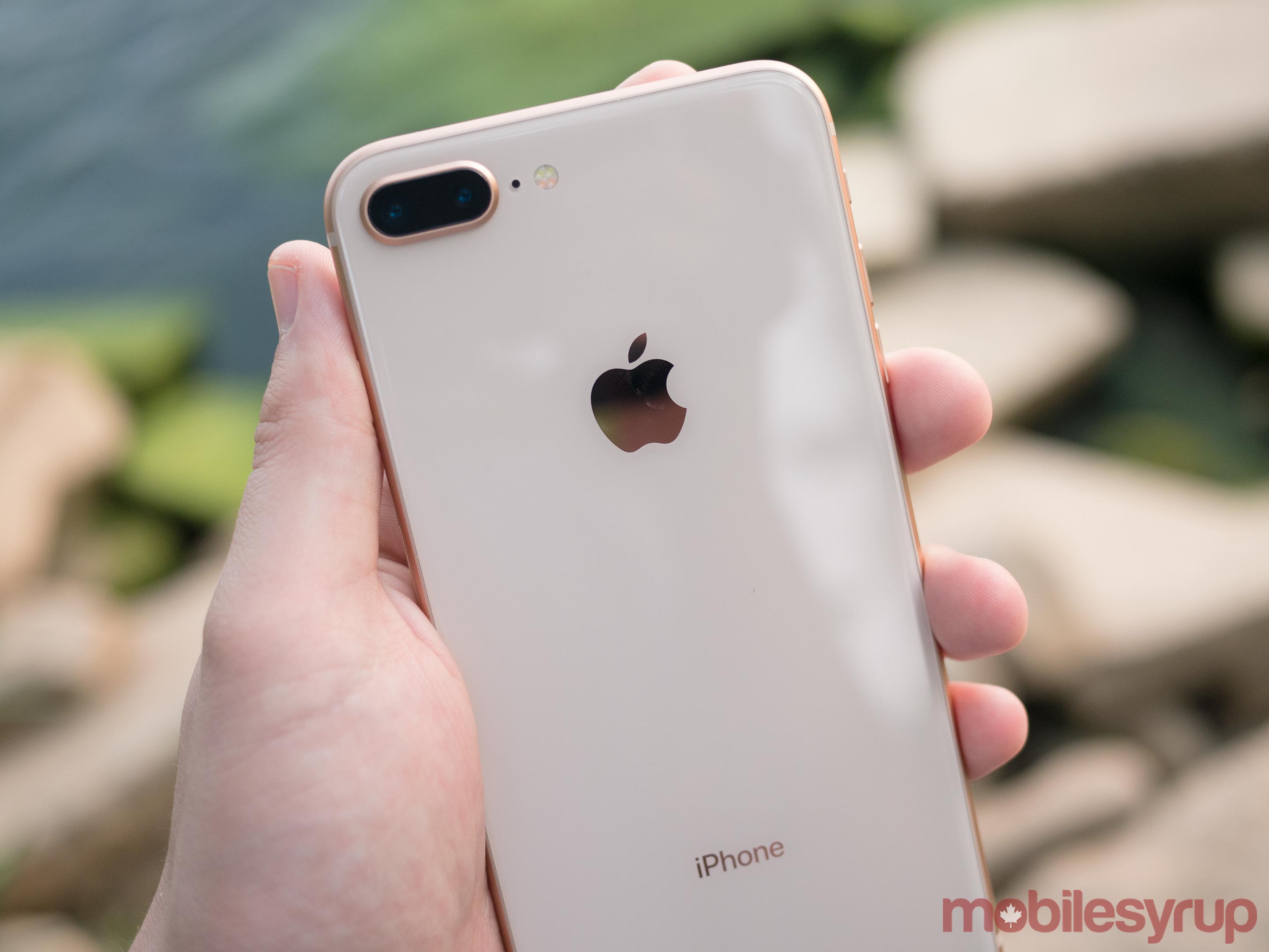
Wireless charging with the iPhone 8 works great and is very convenient, though it requires a compatible charging pad accessory that costs anywhere between $50 and $100 CAD. I tested out both the iPhone 8 and 8 Plus with Belkin’s Boost Up wireless charger and found it worked great, allowing me to easily place the phone on my night stand in the evening when I wanted to charge it overnight.
Apple plans to release an accessory called the AirPower mat that’s capable of charging simultaneously its AirPods via a new wireless charging case, the Apple Watch and the iPhone 8/iPhone 8 Plus. The accessory’s release date is set for some point in 2018.
Hardware improvements

In terms of specs, the iPhone 8 and 8 Plus feature nearly identical internals when compared to its predecessors beyond the smartphone’s new A11 processor, including battery life (which I found to be about the same as the iPhone 7), and 2GB of RAM/3GB of RAM in each respective device.
During my time with the new iPhone, I ran resource intensive AR apps like Sky Guide and The Machine (two of the first ARKit-developed apps), without running into a single major instance of slow down. When playing The Machine the game did experience the occasional bout of lag, though this could be because the game is still in beta.
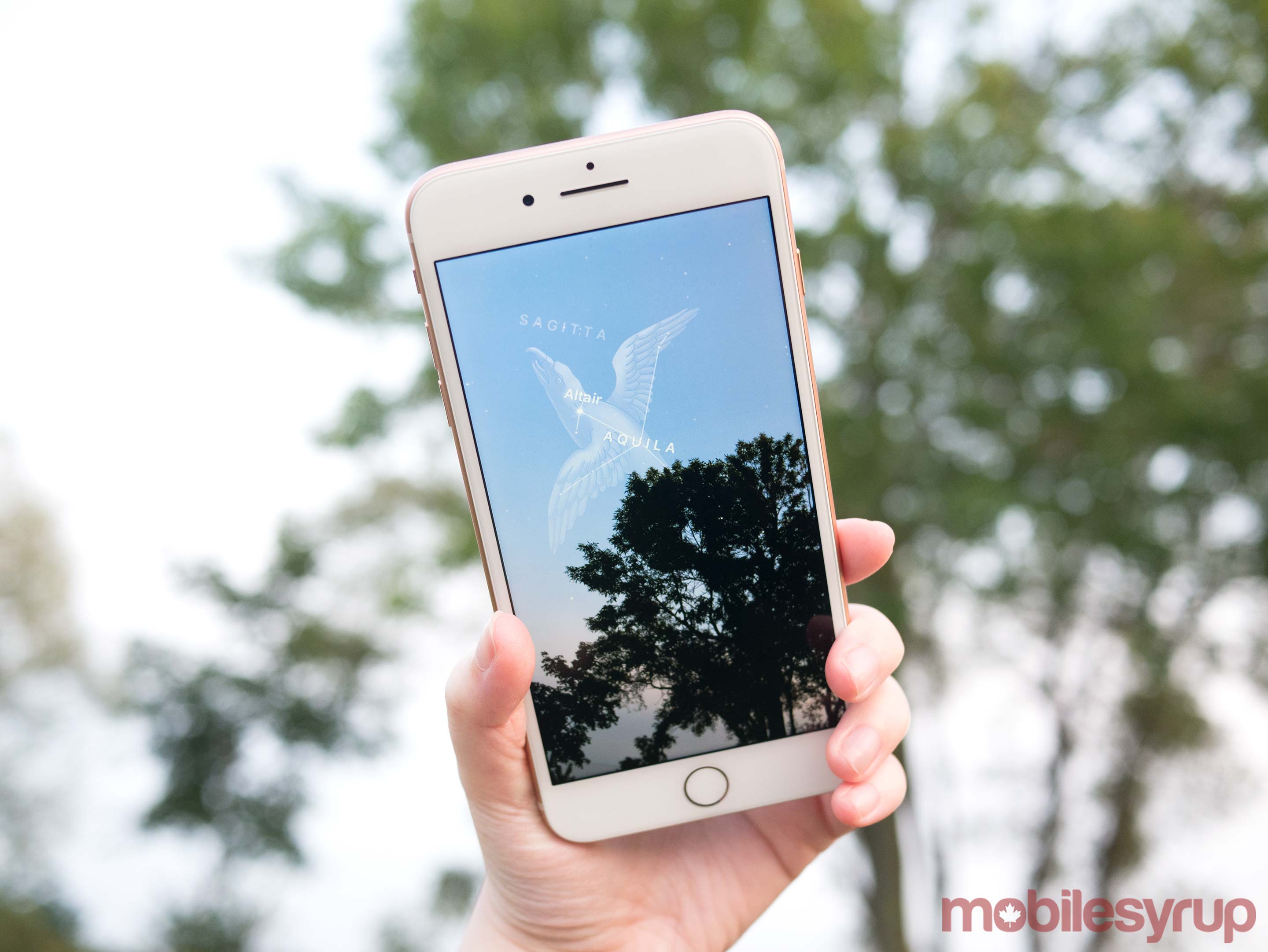
The same can be said about rapidly multitasking, watching high-resolution video and browsing the web; the iPhone 8 ran smoothly in all instances, leading me to believe Apple’s lofty claims surrounding its new Fusion processor are at least somewhat accurate.
Benchmark wise, the iPhone 8 measures in at an impressive 4,215 single-core score via Geekbench, beating out the iPhone 7 Plus and Apple’s A10 Fusion silicon by a significant margin.
Multi-core performance is also similar, with the iPhone 8 hitting a score of 10,139, surpassing the iPhone 7 Plus, which hit 5,411 and the iPhone 7 at 5,387.
“While I was skeptical of True Tone at first, it actually makes a significant difference in screen clarity”
Overall, Apple claims the A11 is ‘up to’ 70 percent faster in terms of its efficiency cores, 25 percent faster with performance cores, and features 30 percent improved GPU performance. While I can’t verify that Apple’s boiler plate performance estimates are entirely accurate, the phone is one of the snappiest I’ve ever used.
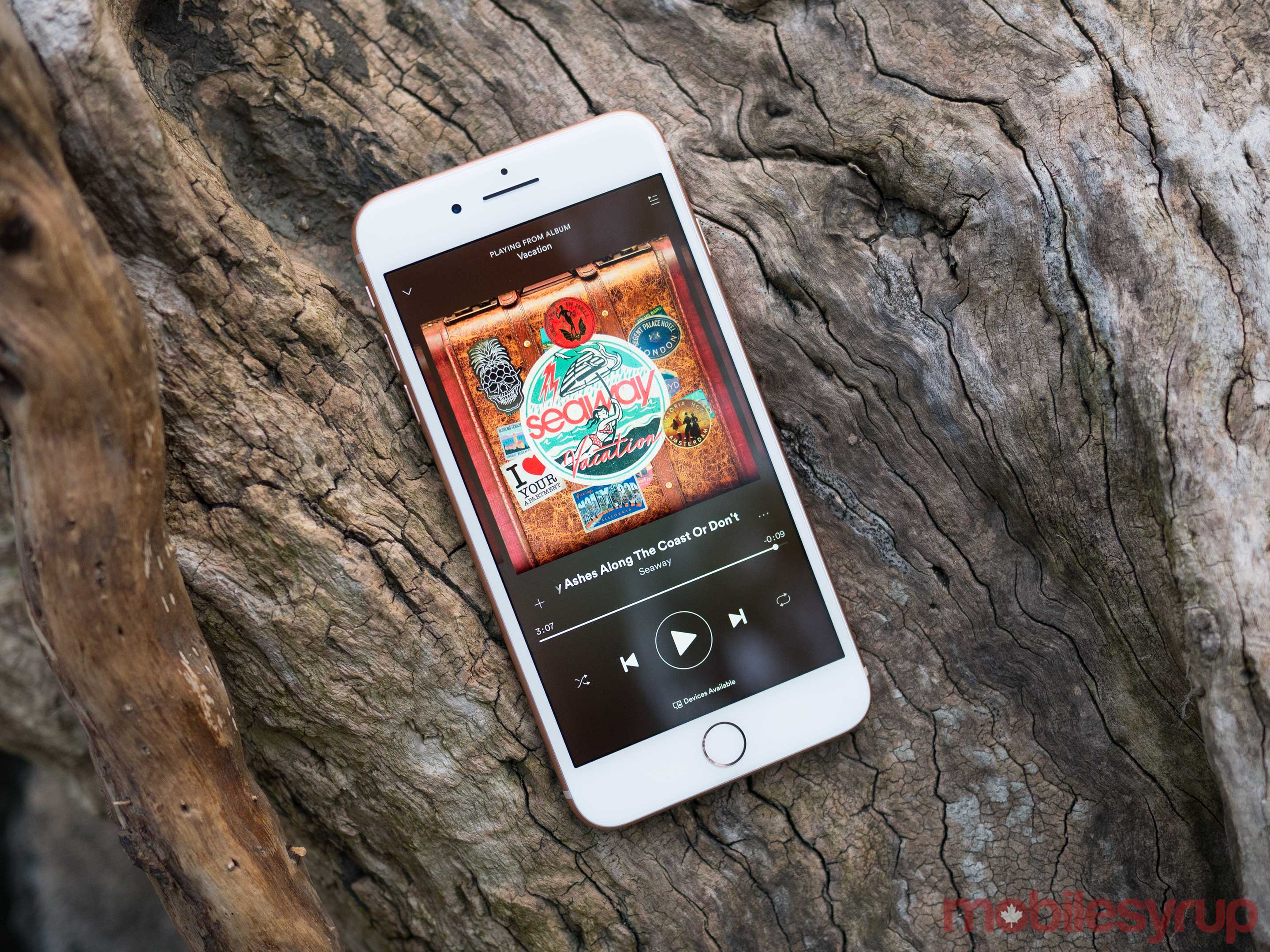
Apple has also updated the iPhone 8’s display with True Tone technology, a feature first seen in the now discontinued 9.7-inch iPad Pro, and more recently the 10.5-inch iPad Pro. While I was skeptical of True Tone’s usefulness at first, it actually makes a significant difference in screen clarity, especially under less than ideal viewing conditions.
True Tone utilizes a four-channel ambient light sensor to automatically adjust white balance and match the light around the user for a better using experience. This works especially well when reading in the evening or under direct sunlight, just like it does with Apple’s iPad Pro.
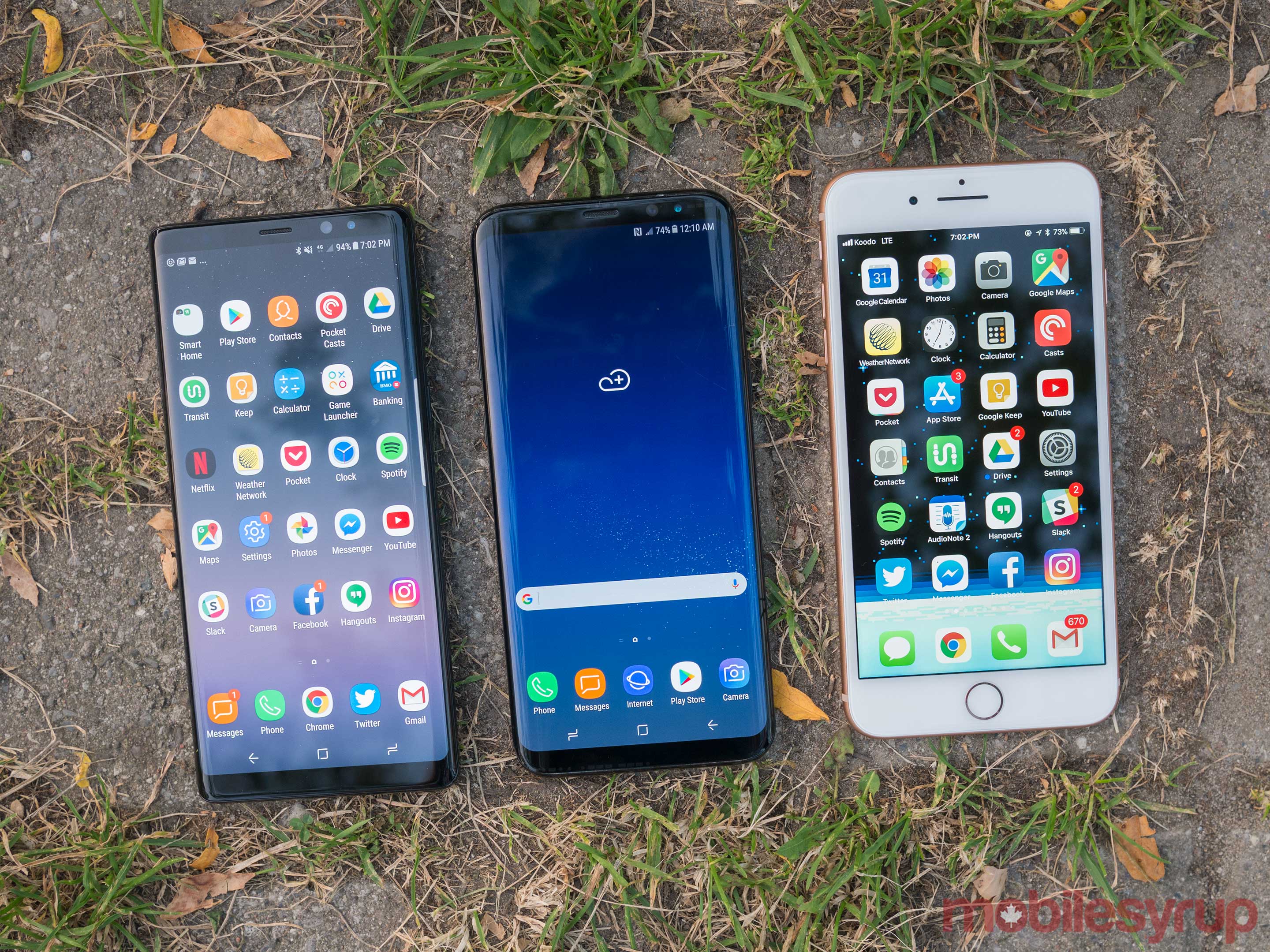
It’s worth pointing out that the iPhone 8’s and 8 Plus’ screen still measures in at 4.7-inches and 1334 x 750 pixels, 5.5-inches and 1920 x 1080 pixels respectively, which means Apple hasn’t improved the resolution of the iPhone 8’s display over the iPhone 7 (that upgrade is saved for the iPhone X this year).
Apple says that it has also updated the iPhone 8’s display to feature a wide colour gamut, though not with official support for HDR standards like HDR10 and Dolby Vision; this again, is something Apple is saving for the iPhone X. All in, the iPhone 8’s screen looks great, though I’d argue that Samsung’s S8 and Note 8 feature colours that are more vibrant and that the display included in Samsung’s 2017 flagship devices is also brighter when compared to Apple’s offering.
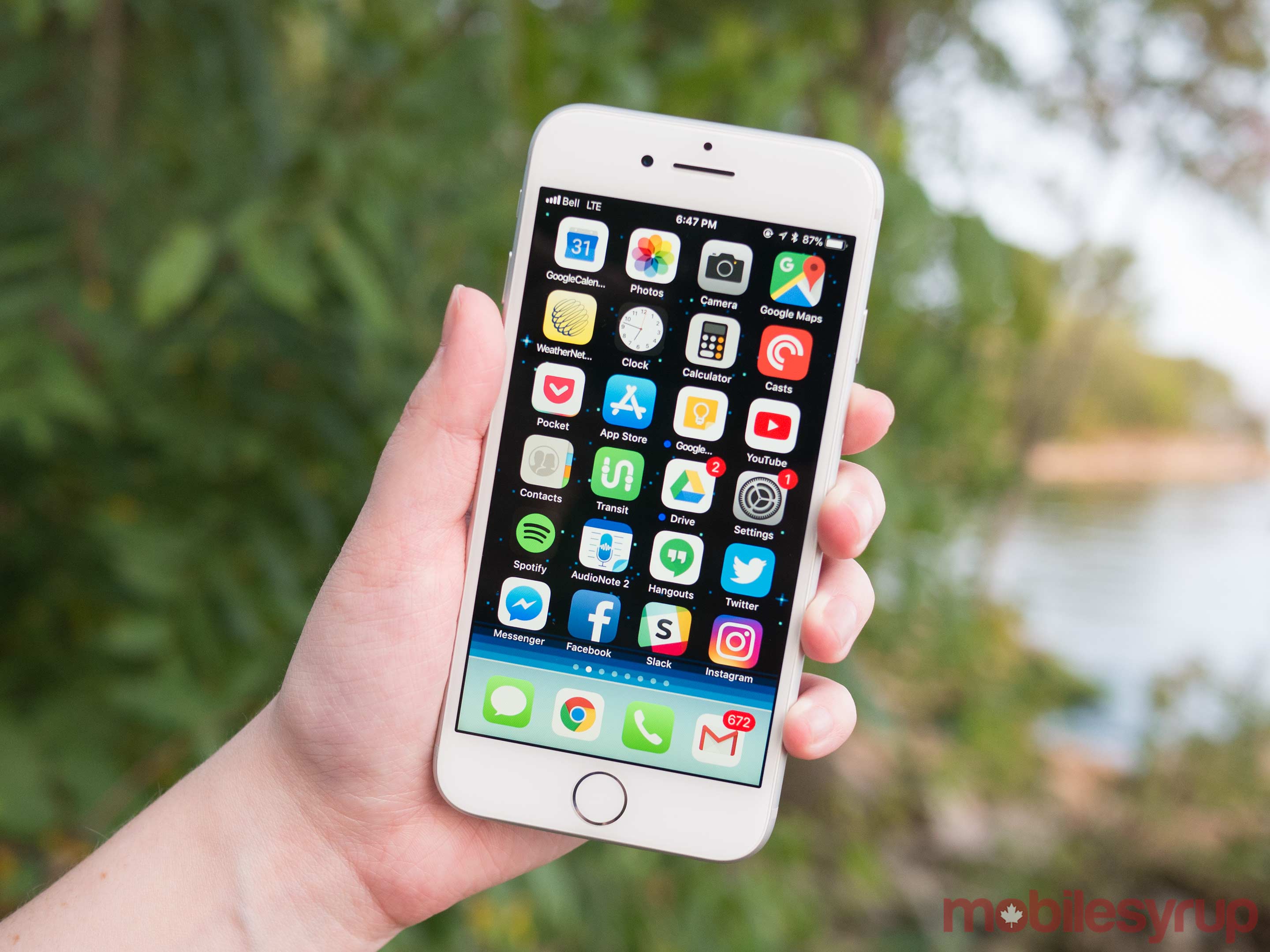
It’s really only the iPhone X that’s capable of rivalling Samsung in the display department, at least in terms of my initial impressions of the tech giant’s upcoming smartphone.
Finally, if you were hoping Apple would opt for a different route and bring the standard 3.5mm headphone jack to the iPhone line, you’ll be disappointed to hear that once again, the tech giant is banking on the idea that the future of audio is wireless — and no, AirPods aren’t included with the iPhone 8.
Incremental camera improvements

While Apple’s iPhone 8 and iPhone 8 Plus feature the same number of megapixels as their predecessors, Apple has slightly improved the shooter with a faster sensor and improved ‘True Tone’ flash performance.
“Where the new phone’s camera truly shines is when it comes to the iPhone 8 Plus’ vastly improved Portrait Mode.”
The Plus’ dual-rear shooter, however, unfortunately doesn’t feature optical image stabilization (OIS) in both lenses; only the wide angle camera features OIS and not the telephoto lens. It seems that once again, Apple is saving dual rear image stabilization for its higher-end iPhone X offering. To put this feature in context with the broader smartphone industry, Samsung’s Note 8 was one of the first device to feature dual rear camera OIS.
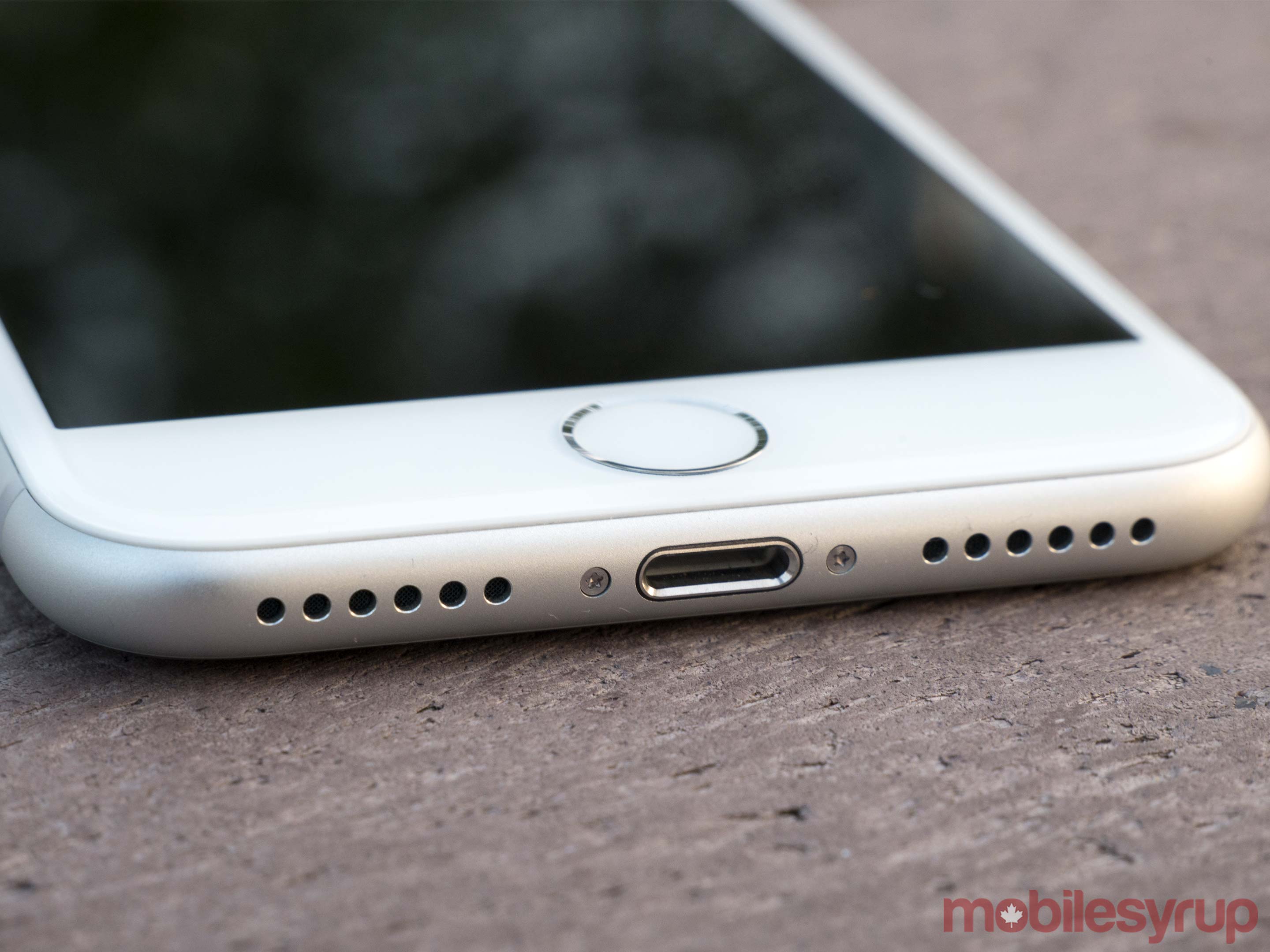
The company’s new image sensor, powered by the A11 Fusion processor, is also able to snap photos with larger dynamic range. But while the colours present in a photo taken with the iPhone 8 are brighter than those shot with the iPhone 7 Plus, the difference is negligible at best. The only significant change I noticed over the iPhone 7 Plus is that focusing is slightly more rapid now, especially when shooting moving subjects and under low-light conditions.
Where the new phone’s camera truly shines is when it comes to the iPhone 8 Plus’ vastly improved Portrait Mode. The depth-of-field effect created by portrait mode feels more natural and the strange-looking blurring that often occurred around the edge of the subject’s face, is now gone.
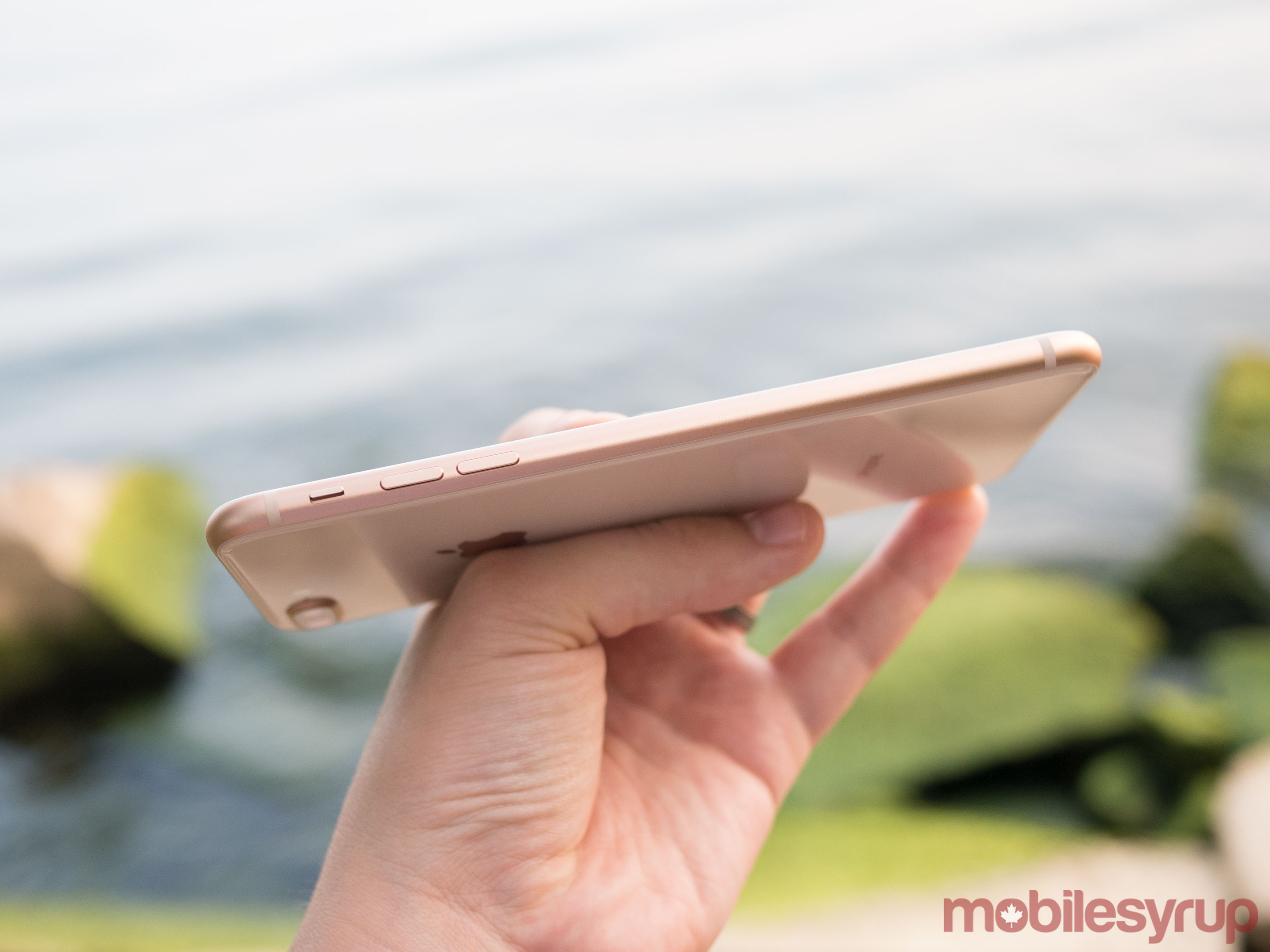
Unlike the Note 8’s Live Focus feature, however, Portrait Mode still doesn’t work great with subjects that aren’t people — lines become blurred and depending on what you’re taking an image of, the photo often won’t turn out. Apple has also added a new Portrait lighting mode that despite early criticism from photography experts, is actually one of the camera’s best new features.
With this mode, users are able to choose between Studio, Contour, Stage and Stage Light Mono, changing the image’s lighting either while shooting the photo, or in post production. Stage Light and Stage Light Moto have the most dramatic effect since they remove the entire background behind a subject.
While many of these lighting tricks are possible with high-end photo editing software such as Adobe’s Photoshop, the ability to alter a portrait’s illumination with a simple swipe of a finger, is undeniably cool and surprisingly useful.
It’s worth noting these feature are only available with the iPhone 8 Plus and not the iPhone 8.
Finally, Apple has also implemented a new video encoder that enables faster frame rates and high-quality 4K video at up to 60 frames per second. The front-facing camera measures in at the same 8-megapixels as the iPhone 7.
iOS 11
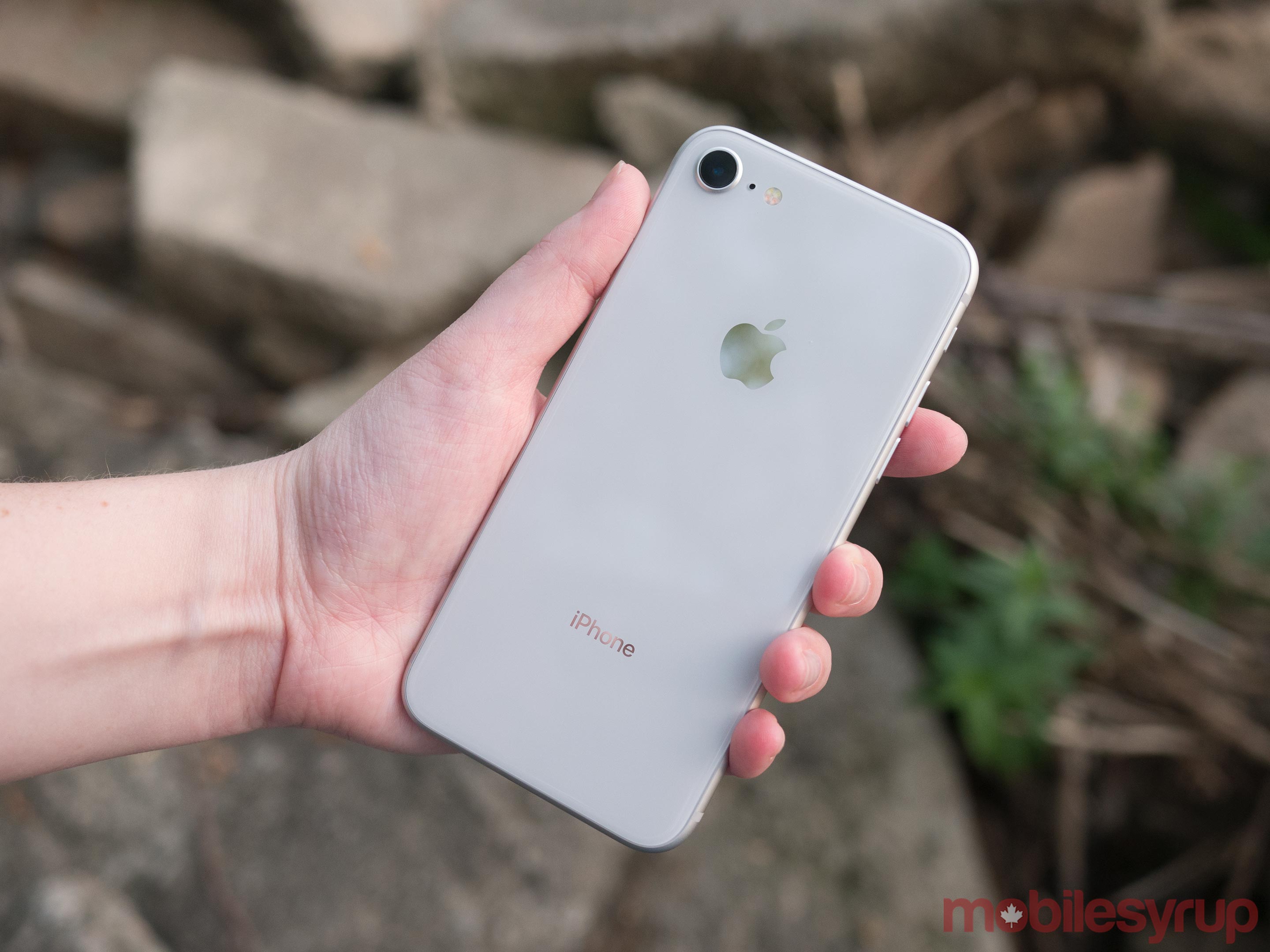
As with the release of every new iPhone, the latest version of Apple’s operating system is set to drop on September 19th.
While many of the OS’ changes pertain more to the tablet side of things with the 10.5-inch iPad Pro being the marquee example, Apple has also introduced new features on the iPhone side of the equation.
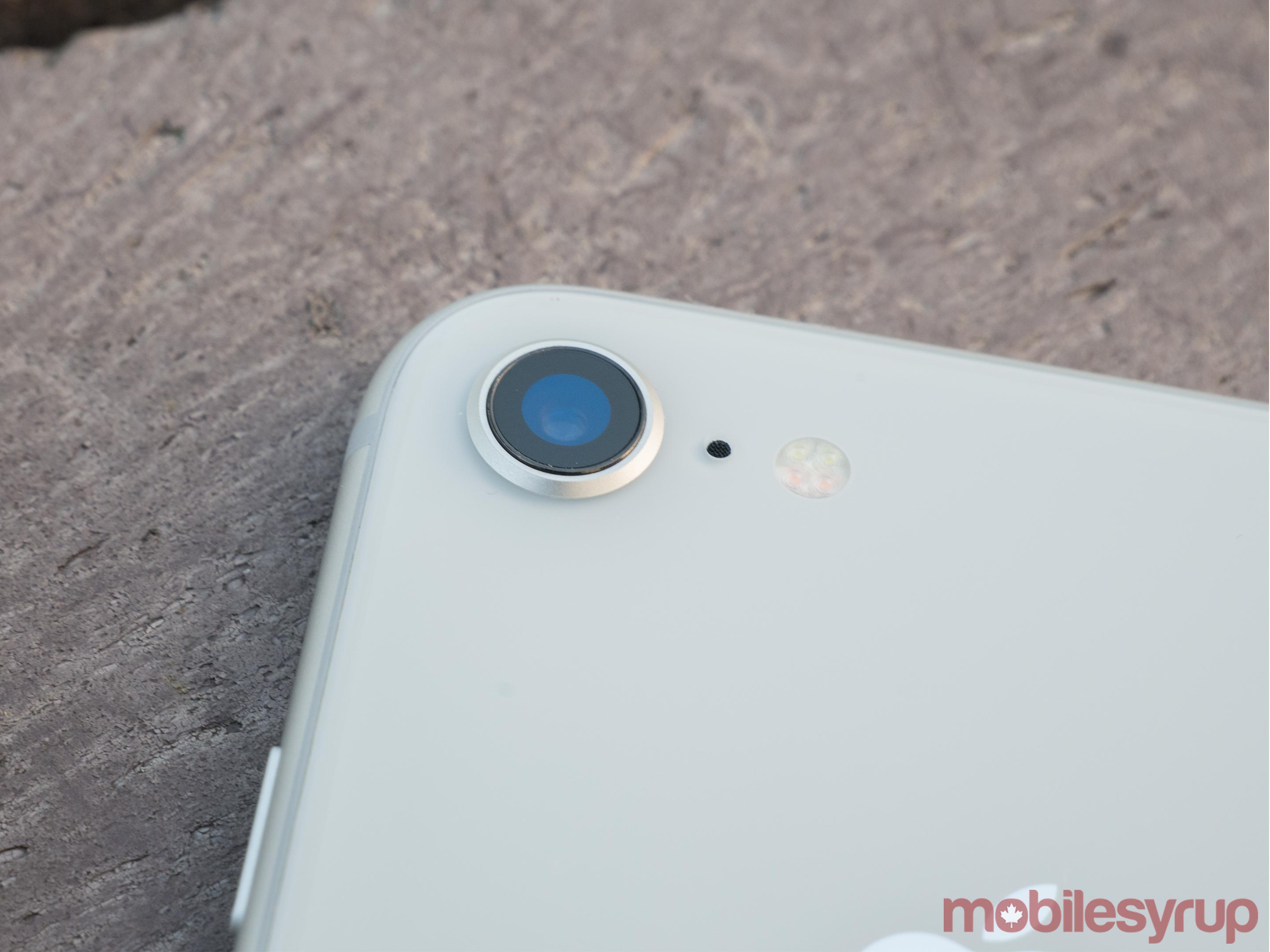
Siri’s voice now sounds more natural, a new File system is finally available that allows users to actually see the files present on their device (this should have been added to iOS years ago), the Control Centre has been revamped, and perhaps more importantly, the mobile AR wars have begun with the release of the ARKit.
Oh and Apple has added slightly chunkier fonts in various places across the OS. Overall, iOS 11 makes a number of small, but still significant positive changes to Apple’s operating system.
Canadian carrier perspective

Since Apple’s iPhone 8 and 8 Plus are Band 66 compatible, that means the phones can be used with Freedom Mobile’s LTE network. There is one caveat though: LTE only works until you receive a call or are otherwise dropped to 3G service. Once the iPhone 8 flips to 3G, only a restart will get the device back on LTE — the same issue that’s been occurring for those bringing unlocked Band 66 Android devices to the carrier. It’s unclear if Freedom plans to resolve this issue in the future.
So while the iPhone 8 and 8 Plus are compatible with Freedom Mobile’s network, those hoping to consistently access LTE with the smartphone will be disappointed.
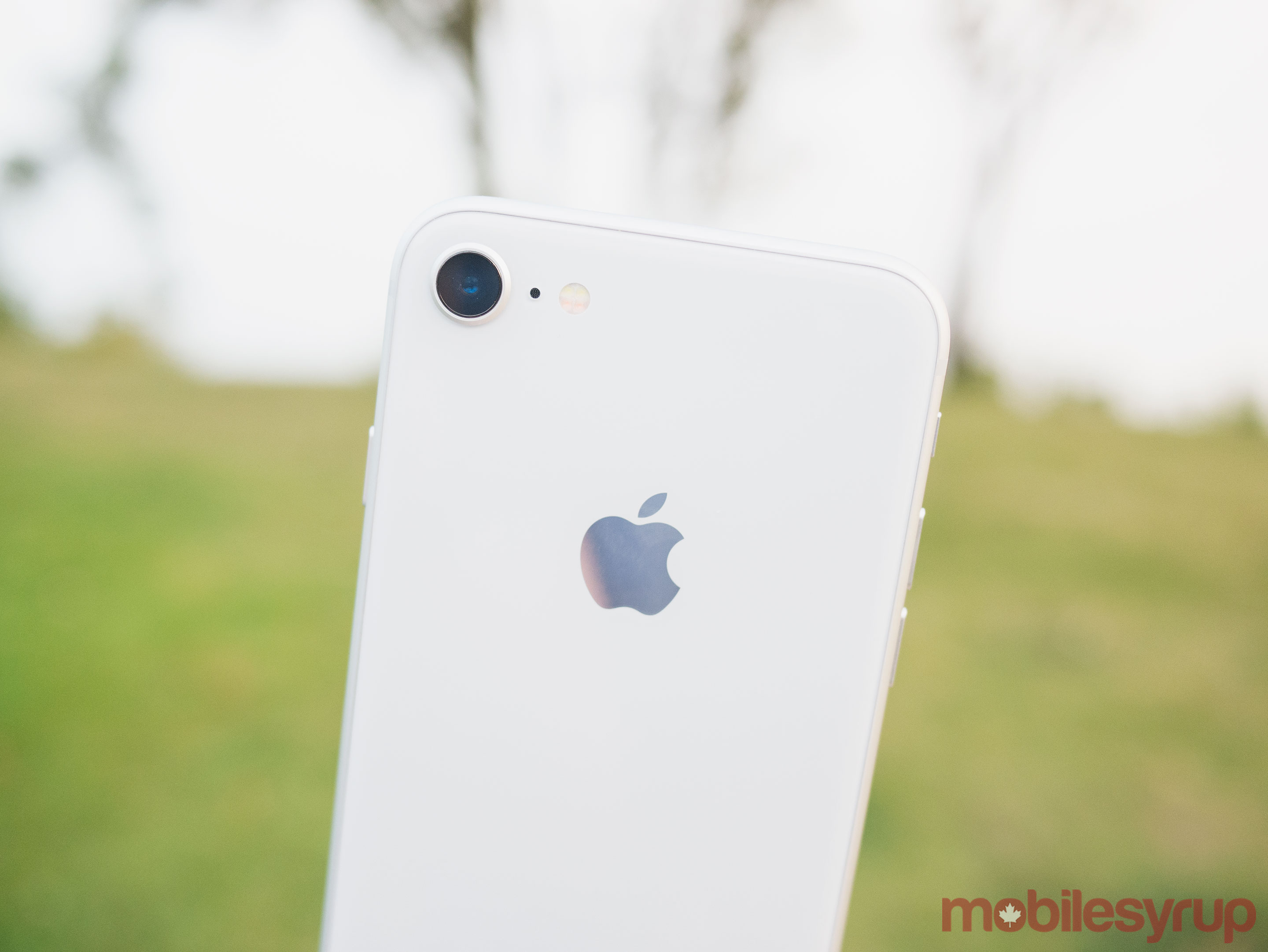
I also tested the device out on Bell’s network as well as with my personal Koodo SIM and the experience was smooth.
Update 09/25/17: We’ve looked further into the iPhone 8’s compatibility with Freedom Mobile and have determined that it’s possible the carrier could have released an update to improve network performance with Apple’s new iPhone. While the iPhone 8 still drops to 3G when receiving a call, it now automatically picks up the LTE single almost immediately after the call is finished.
Waiting for the iPhone X
Despite how solid of a device the iPhone 8 is, it's still overshadowed by the impending iPhone X. While the X feels like the future of where Apple intends to take its iPhone line, the 8 is perhaps a little too reminiscent of the past. That's not to say that it isn't a solid smartphone, because it is. The iPhone 8, and the 8 Plus in particular, still offer one of the best mobile photography experiences out there.
If you're an iPhone 7 or even an iPhone 6s owner, the iPhone 8 likely doesn't offer enough to justify an upgrade, though its A11 Bionic processor is impressive from a technical perspective. Those with an older iPhone, however, or those who aren't interested in the various bells and whistles the iPhone X offers, will find a lot to like about the iPhone 8 and the iPhone 8 Plus. Looking to the future, it's also likely that many of the iPhone X's more interesting features will trickle down to Apple's core iPhone releases.
The 64GB model iPhone 8 model starts at $929, while the 256GB model is priced at $1,139. Meanwhile, the iPhone 8 Plus begins at $1059 for 64GB of internal storage, with the 256GB model set to cost $1,269. The iPhone 8 and iPhone 8 Plus are available in Gold, Silver and Black.
The iPhone X is expected to release on November 3rd with pre-orders starting on October 27th. The device is priced at $1,319 for the 64GB version.
"Despite how solid of a device the iPhone 8 is, it's still overshadowed by the impending iPhone X"
MobileSyrup may earn a commission from purchases made via our links, which helps fund the journalism we provide free on our website. These links do not influence our editorial content. Support us here.

